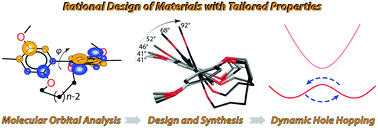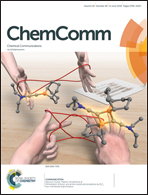Towards the rational design of novel charge-transfer materials: biaryls with a dihedral angle-independent hole delocalization mechanism†
Abstract
Biaryl cation radicals are important electroactive materials, which show two mechanisms of hole delocalization: static delocalization at small interplanar dihedral angles and dynamic hopping at larger angles, reflecting the interplay between electronic coupling and structural reorganization. Herein, we describe the rational design of biaryls possessing an invariant hole delocalization mechanism.



 Please wait while we load your content...
Please wait while we load your content...
